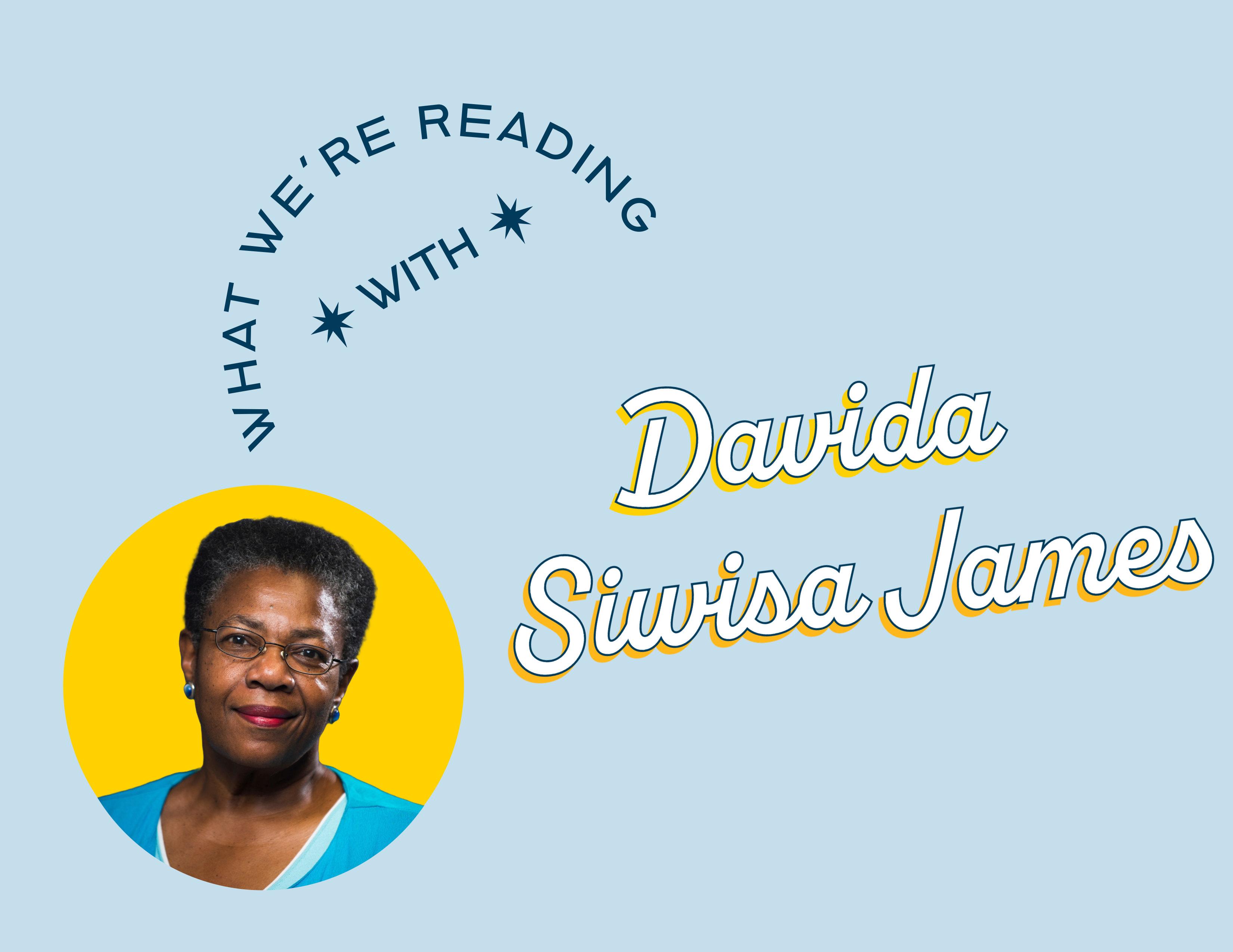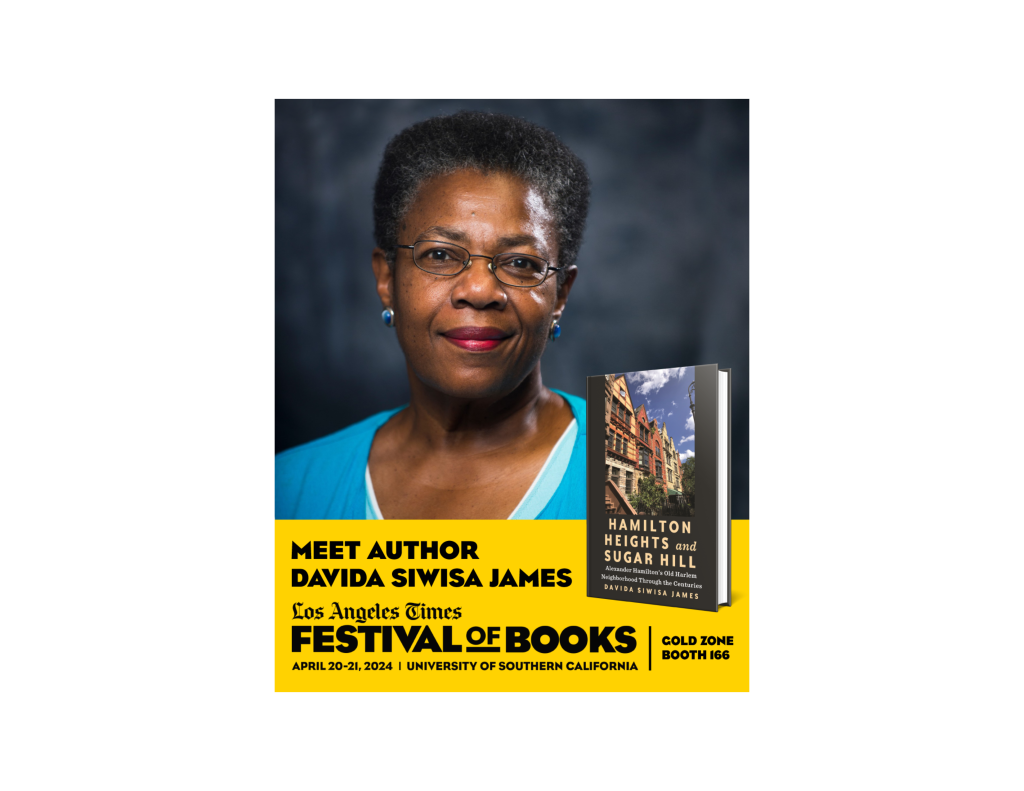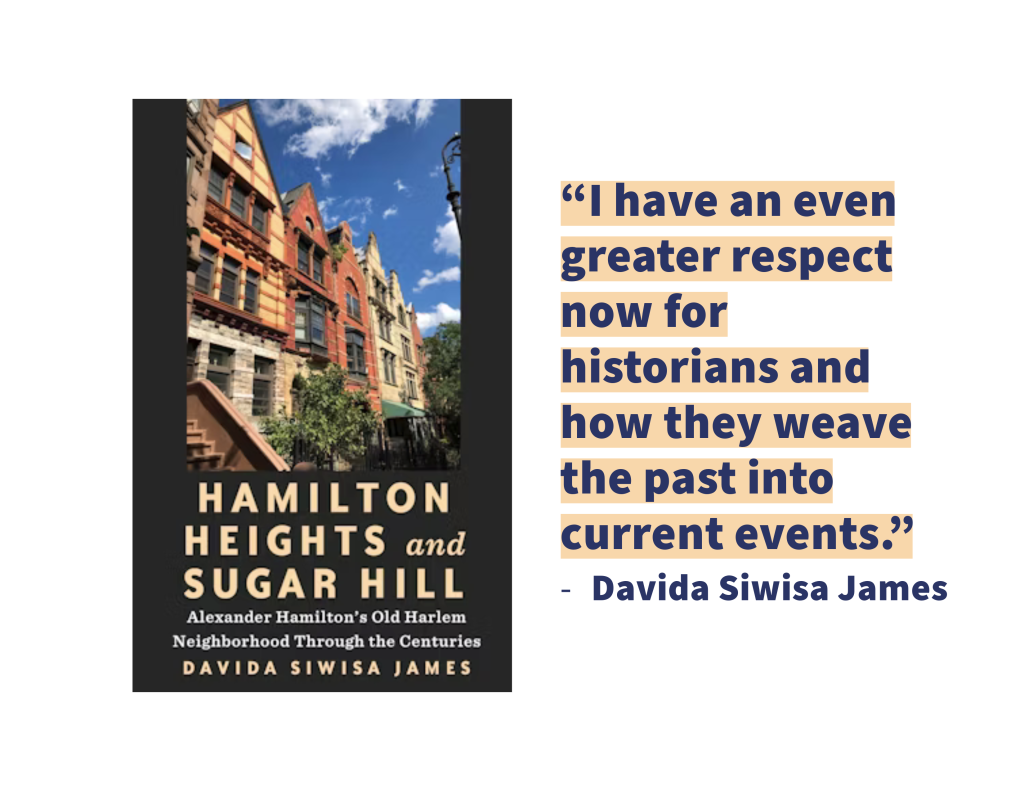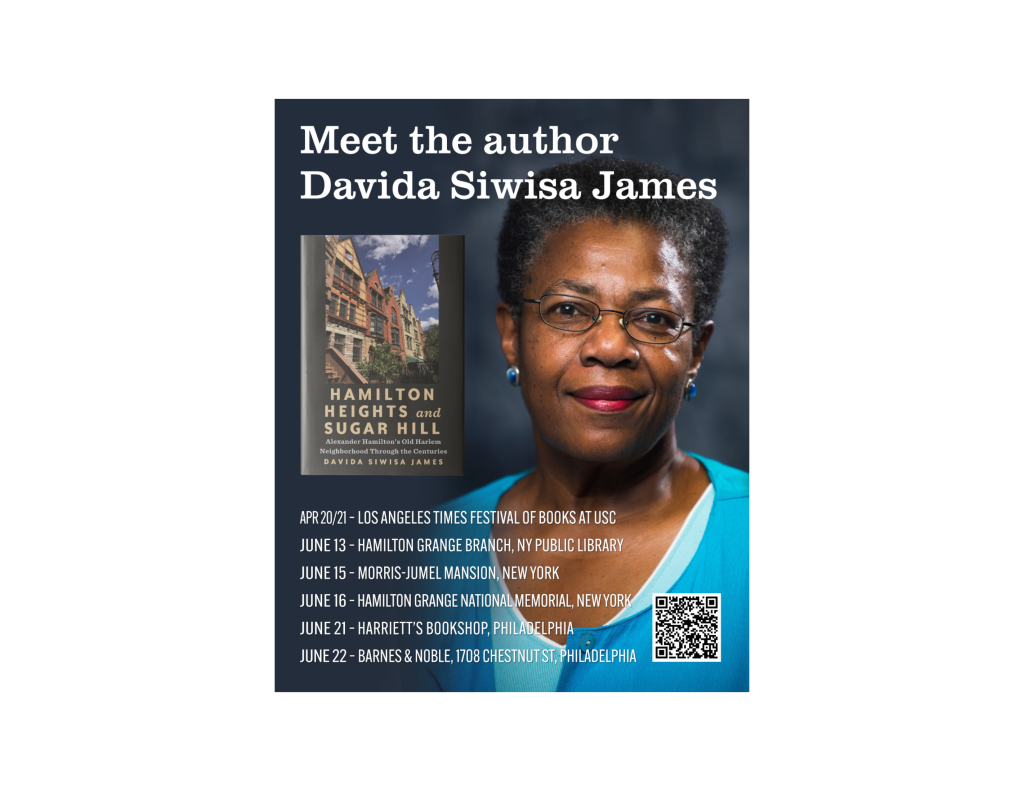What we’re reading with Davida Siwisa James

Alum Davida Siwisa James’s new book, Hamilton Heights and Sugar Hill: Alexander Hamilton’s Old Harlem Neighborhood Through the Centuries (Fordham University Press) is scheduled to be published on April 2. She will be an exhibitor at the Los Angeles Times Festival of Books on April 20-21 at USC (Gold Zone, Booth 166) and will be kicking off an east coast tour this June. Learn more about Siwisa James by visiting the author’s website and read a sneak preview of her book in our interview below.
Can you tell us what your book is about?
Hamilton Heights and Sugar Hill is a historical nonfiction book that traces four centuries of the landmark West Harlem neighborhood where Alexander Hamilton built his home, The Grange, in 1802. The Grange is only two blocks from its original location, now a New York City and federal historic landmark managed by the National Park Service. My book is about the people and places that make the neighborhood special. The stunning homes erected in the late nineteenth century make it one of the most architecturally significant areas of Manhattan. And large sections of the neighborhood and individual homes are also historic landmarks.
My book traces the fascinating people who shaped the area and how it went from a pastoral place for New Yorkers to get away from the hustle and bustle of downtown, for over two centuries, to an urban setting. From George Washington’s encampment during the start of the American Revolution, it has been home to Duke Ellington, Thurgood Marshall, Norman Rockwell, Ralph Ellison and George Gershwin. This stunning neighborhood has been at the heart of many important events in New York City’s history in civil rights, entertainment, and infrastructure. Dr. George Edmund Haynes, the man who co-founded the National Urban League, lived there. The book spans Henry Hudson’s exploration, the colonization of the Dutch arrivals in 1624, the incorporation of Harlem in 1658 on through the centuries to The Great Migration, Harlem Renaissance and the last four decades of gentrification.

Where did the idea for your book come from?
The main reason I wanted to write the book was to bring light to this beautiful landmark neighborhood and dispel the misconception that Harlem was synonymous with being a dangerous, drug-infested ghetto. Unfortunately, for a lot of people that is still a knee-jerk reaction to the word “Harlem.” I saw Lin-Manuel Miranda’s wonderful play “Hamilton” at the Pantages in Hollywood. I was so happy it had given Alexander Hamilton his long overdue recognition. But when I would mention to people that I used to live in the Hamilton Heights section of Harlem, some thought I was making it up. They couldn’t believe that Alexander Hamilton built a home in Harlem, even in 1800. Trying to erase those pitying looks that I’d lived there and convince people that Hamilton Heights and Sugar Hill were beautiful well-kept neighborhoods, with stunning architecture and mansions, fell on deaf ears. I searched and could not find a book about the history of this stunning neighborhood. So, I thought I would take my idol Toni Morrison’s advice. She once said that “if there’s a book that you want to read, but it hasn’t been written yet, then you must write it.”
What was your favorite and/or least favorite part in researching and writing this book?
My favorite part of the research was that it reawakened the fact that I used to love history when I was in school. I was also constantly surprised at the incredible stories I kept uncovering about the neighborhood – like the fact that there was a renowned high school for art and music that predated the downtown one featured in the film Fame. Some of the greatest artists in the country attended it. There is so much discussion today about how history is told, lost, ignored, or distorted. I found it both fascinating and frustrating to pull on threads that I would uncover in my research where only a small part of the full story was being told. History is not just written by the victors but influenced quite often by the author’s personal background and leanings. If there was a least favorite part, I would say the daunting process of bringing together so many sources of information and four hundred years of history into a cohesive story. I have an even greater respect now for historians and how they weave the past into current events.
What do you hope readers come away with after reading this work?
Mostly I hope my book illuminates some of Harlem’s long-lost history of not just the seventy years when it was predominantly Black and where Harlem Renaissance gatherings happened, but the other 330 years of its development before and after The Great Migration. Harlem covered almost two thirds of Manhattan for almost two hundred years from the 1600s to the mid-1800s. Some of the same buildings in Hamilton Heights and Sugar Hill, architectural wonders built from the late 1880s to the early 1930s, are now historic landmarks valued between two and five million dollars. I hope readers will be in awe, as I am, that within just a few blocks, less than a mile, George Washington and Alexander Hamilton fought the American Revolution, Norman Rockwell played with his friends across the street from James A. Bailey of Barnum & Bailey’s 8,200 square foot-Romanesque mansion, and that later Duke Ellington composed music a few blocks from where Thurgood Marshall was reviewing his legal notes on Brown v. Board of Education. Ellington lived on St. Nicholas Avenue directly across the street from Victor Hugo Green who created The Green Book. Amazing.

Do you have a favorite architectural spot in Hamilton Heights and Sugar Hill? Why is it your favorite?
Riverside Drive on the Hudson River is definitely one of my favorite places in the neighborhood. But there is no doubt that Convent Avenue, where I used to live, is my all- time favorite place. It is a tree-lined street with gorgeous brownstones, limestone townhouses, mansions, and for two hundred years, Alexander Hamilton’s home. Hamilton’s Grange was moved twice, always on his original estate just a block or two in different directions. But it rested on Convent Avenue for 119 years. The mansion that was the film location for The Royal Tenenbaums is also on that street. In addition to all those beautiful homes and the people who added to its aura, the avenue leads to City College. Its gothic spires and architecture would make you think you were at Oxford or Cambridge universities. It’s a street that is quite literally named for the nineteenth century Convent School that used to be on part of what became the City College campus.

Photo of Davida Siwisa James: James Quigg
LA Times Festival of Books and Tour image: Derek Krissoff